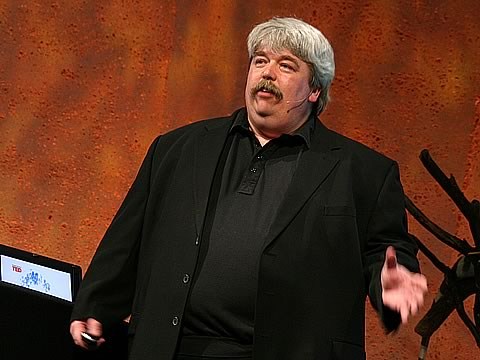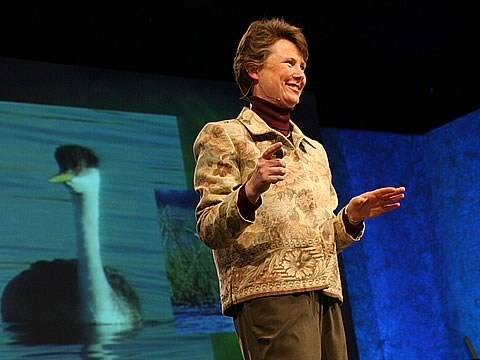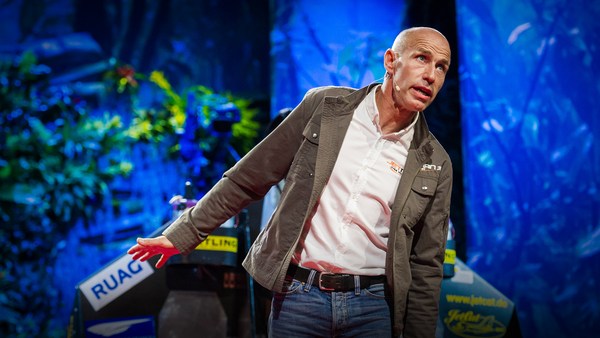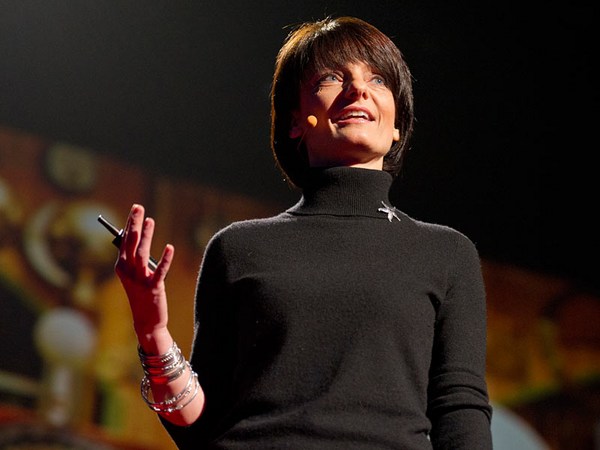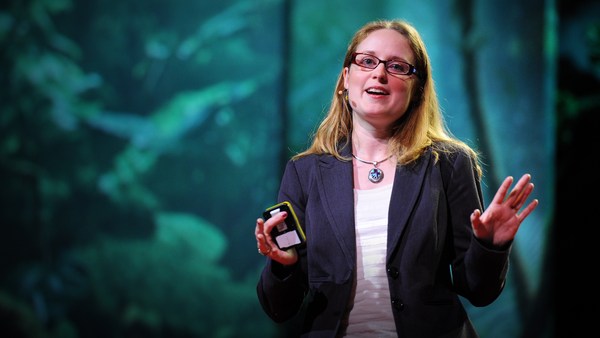It is a dream of mankind to fly like a bird. Birds are very agile. They fly, not with rotating components, so they fly only by flapping their wings. So we looked at the birds, and we tried to make a model that is powerful, ultralight, and it must have excellent aerodynamic qualities that would fly by its own and only by flapping its wings.
So what would be better than to use the herring gull, in its freedom, circling and swooping over the sea, and to use this as a role model? So we bring a team together. There are generalists and also specialists in the field of aerodynamics, in the field of building gliders. And the task was to build an ultralight indoor-flying model that is able to fly over your heads. So be careful later on.
(Laughter)
And this was one issue: to build it that lightweight that no one would be hurt if it fell down.
So why do we do all this? We are a company in the field of automation, and we'd like to do very lightweight structures because that's energy efficient, and we'd like to learn more about pneumatics and air flow phenomena.
So I now would like you to put your seat belts on and put your hats on. So maybe we'll try it once -- to fly a SmartBird.
Thank you.
(Applause)
(Cheers)
(Applause)
(Applause ends)
(Applause)
So we can now look at the SmartBird. So here is one without a skin. We have a wingspan of about two meters. The length is one meter and six, and the weight is only 450 grams. And it is all out of carbon fiber. In the middle we have a motor, and we also have a gear in it, and we use the gear to transfer the circulation of the motor. So within the motor, we have three Hall sensors, so we know exactly where the wing is. And if we now beat up and down --
(Mechanical sounds)
We have the possibility to fly like a bird. So if you go down, you have the large area of propulsion, and if you go up, the wings are not that large, and it is easier to get up.
So, the next thing we did, or the challenges we did, was to coordinate this movement. We have to turn it, go up and go down. We have a split wing. With the split wing, we get the lift at the upper wing, and we get the propulsion at the lower wing. Also, we see how we measure the aerodynamic efficiency. We had knowledge about the electromechanical efficiency and then we can calculate the aerodynamic efficiency. So therefore, it rises up from passive torsion to active torsion, from 30 percent up to 80 percent.
Next thing we have to do, we have to control and regulate the whole structure. Only if you control and regulate it, you will get that aerodynamic efficiency. So the overall consumption of energy is about 25 watts at takeoff and 16 to 18 watts in flight.
Thank you.
(Applause)
Bruno Giussani: Markus, we should fly it once more.
Markus Fischer: Yeah, sure.
(Audience) Yeah!
(Laughter)
(Gasps)
(Cheers)
(Applause)
